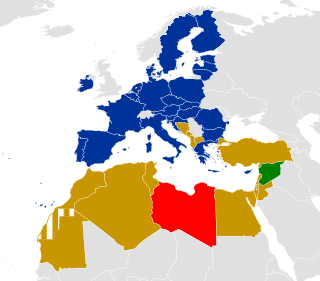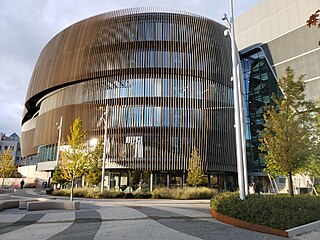Related Research Articles

Civil engineering is a professional engineering discipline that deals with the design, construction, and maintenance of the physical and naturally built environment, including public works such as roads, bridges, canals, dams, airports, sewage systems, pipelines, structural components of buildings, and railways.

Peer review is the evaluation of work by one or more people with similar competencies as the producers of the work. It functions as a form of self-regulation by qualified members of a profession within the relevant field. Peer review methods are used to maintain quality standards, improve performance, and provide credibility. In academia, scholarly peer review is often used to determine an academic paper's suitability for publication. Peer review can be categorized by the type of activity and by the field or profession in which the activity occurs, e.g., medical peer review. It can also be used as a teaching tool to help students improve writing assignments.
BioMed Central (BMC) is a United Kingdom-based, for-profit scientific open access publisher that produces over 250 scientific journals. All its journals are published online only. BioMed Central describes itself as the first and largest open access science publisher. It was founded in 2000 and has been owned by Springer, now Springer Nature, since 2008.

The American Society of Civil Engineers (ASCE) is a tax-exempt professional body founded in 1852 to represent members of the civil engineering profession worldwide. Headquartered in Reston, Virginia, it is the oldest national engineering society in the United States. Its constitution was based on the older Boston Society of Civil Engineers from 1848.

The African Peer Review Mechanism (APRM) is a mutually agreed instrument voluntarily acceded to by the member states of the African Union (AU) as a self-monitoring mechanism. It was founded in 2003.

The Canadian Society for Civil Engineering (CSCE) was founded in 1887 as the Canadian Society of Civil Engineers, renamed in 1918 as the Engineering Institute of Canada (EIC), and re-established in June 1972 as a member society of the EIC under the slightly different but current name. It promotes advances in the field of civil engineering including geotechnical engineering, structural engineering, hydrotechnical engineering, environmental engineering, transportation engineering and surveying and geomatics engineering. Members who are professional civil engineers are usually categorized and may use the post nominals as associates (AMCSCE), members (MCSCE) or fellows (FCSCE). The grade of "Fellow" is achieved through election by one's peers within the CSCE.

The American Society for Engineering Education (ASEE) is a non-profit member association, founded in 1893, dedicated to promoting and improving engineering and engineering technology education. The purpose of ASEE is the advancement of education in all of its functions which pertain to engineering and allied branches of science and technology, including the processes of teaching and learning, counseling, research, extension services and public relations. ASEE administers the engineering technology honor society Tau Alpha Pi.
ISEC may refer to:
The Society of Allied Weight Engineers (SAWE) is a professional society of engineers that pertains to the specific field of Mass Properties.
Rustum Roy was a physicist, born in India, who became a professor at Pennsylvania State University and was a leader in materials research. As an advocate for interdisciplinarity, he initiated a movement of materials research societies and, outside of his multiple areas of scientific and engineering expertise, wrote impassioned pleas about the need for a fusion of religion and science and humanistic causes.
The Electrochemical Society is a learned society based in the United States that supports scientific inquiry in the field of electrochemistry solid-state science and related technology. The Society membership comprises more than 8,000 scientists and engineers in over 85 countries at all degree levels and in all fields of electrochemistry, solid-state science and related technologies. Additional support is provided by institutional members including corporations and laboratories.

The North–South Centre, officially the European Centre for Global Interdependence and Solidarity, is a Partial Agreement of the Council of Europe, the oldest political organisation of European states.

The Union for the Mediterranean is an intergovernmental organization of 43 member states from Europe and the Mediterranean Basin: the 27 EU member states and 16 Mediterranean partner countries from North Africa, Western Asia and Southern Europe. It was founded on 13 July 2008 at the Paris Summit for the Mediterranean, with an aim of reinforcing the Euro-Mediterranean Partnership (Euromed) that was set up in 1995 as the Barcelona Process. Its general secretariat is located in Barcelona, Catalonia, Spain.
The IEEE Signal Processing Society is one of the nearly 40 technical societies of the Institute of Electrical and Electronics Engineers (IEEE) and the first one created. Its mission is to "advance and disseminate state-of-the-art scientific information and resources; educate the signal processing community; and provide a venue for people to interact and exchange ideas."
ASCE Library is an online full-text civil engineering database providing the contents of peer-reviewed journals, proceedings, e-books, and standards published by the American Society of Civil Engineers. The Library offers free access to abstracts of Academic journal articles, proceedings papers, e-books, and standards as well as many e-book chapters. Access to the content is available either by subscription or pay-per-view for individual articles or chapters. E-books and standards can be purchased and downloaded in their entirety. Most references cited by journal articles and proceedings papers in the library are linked to original sources using CrossRef. Linking provides researchers with the ability to link from reference citations to the bibliographic records of other scientific and technical publishers’ articles. ASCE also offers librarians usage statistics which are compliant with the COUNTER Code of Practice for Journals and Databases. All articles are in PDF and many journal articles are also available in HTML format.
Scholarly peer review or academic peer review is the process of having a draft version of a researcher's methods and findings reviewed by experts in the same field. Peer review is widely used for helping the academic publisher decide whether the work should be accepted, considered acceptable with revisions, or rejected for official publication in an academic journal, a monograph or in the proceedings of an academic conference. If the identities of authors are not revealed to each other, the procedure is called dual-anonymous peer review.

The Association of Chiropractic Colleges (ACC) is composed of accredited chiropractic educational programs in North America and affiliate member institutions worldwide. Its stated goal is to advance chiropractic education and research among its member institutions, which it achieves through a number of regularly scheduled conferences.

Venkatesh Kumar R Kodur is a scientist and university professor, currently at Michigan State University. He was born in Kodur village in Karnataka India, received his bachelor's degree in Civil engineering from the University Visveswaraya College of Engineering, Bangalore, India, in 1984. He received his M.Sc. and Ph.D. degrees from Queen's University at Kingston, Canada, in 1988 and 1992, respectively. Following a brief stint as a Post-doctoral Fellow at Royal Military College, Kingston, Canada, he joined the National Research Council (Canada), where as senior scientist, he carried out extensive research in structural fire safety field. In 2005, he joined the faculty of Michigan State University (MSU), where he is currently a University Distinguished Professor in the Department of Civil & Environmental Engineering. Kodur has established unique fire test facilities and highly acclaimed research program in structural fire engineering area at MSU and is the founding director of the Center on Structural Fire Safety and Diagnostics.

The Interdisciplinary Science and Engineering Complex (ISEC) is a 234,000 square-foot building at Northeastern University designed for collaborative research, laboratory access, and classroom learning. The building is located on the University's central campus at 805 Columbus Ave, Boston, Massachusetts. The building initially opened on April 3, 2017.

Alphose Zingoni is a Zimbabwean–South African engineer and professor of structural engineering and mechanics in the Department of Civil Engineering at the University of Cape Town, and founder of the Structural Engineering, Mechanics & Computation (SEMC) series of international conferences.
References
- ↑ "Structural Engineering Expert Witnesses".
- ↑ "Professor Singh awarded ASCE Construction Management Award". 20 March 2019.
- ↑ "Online Civil Engineering Masters Programs". US News. 11 November 2016. Retrieved 19 July 2023.
- ↑ "Mission of ISEC". International Structural Engineering and Construction Society. Archived from the original on September 17, 2013. Retrieved December 30, 2013.
- ↑ "ISEC | International Structural Engineering and Construction Society". www.isec-society.org. Retrieved 19 July 2023.
- ↑ "ISEC | International Structural Engineering and Construction Society".
- ↑ "Proceedings of International Structural Engineering and Construction".
- ↑ "ISEC | International Structural Engineering and Construction Society".